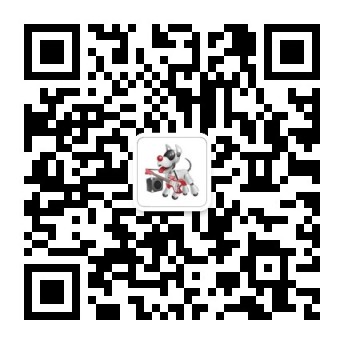python GUI框架pyqt5如何对图片进行流式布局(瀑布流flowlayout)
流式布局
流式布局,也叫做瀑布流布局,是网页中经常使用的一种页面布局方式,它的原理就是将高度固定,然后图片的宽度自适应,这样加载出来的图片看起来就像瀑布一样整齐的水流淌下来。
pyqt流式布局
那么在pyqt5中我们怎么使用流式布局呢?pyqt没有这个控件,需要我们自己去封装,下面是流式布局的封装代码。
class FlowLayout(QLayout):
def __init__(self, parent=None, margin=0, spacing=-1):
super(FlowLayout, self).__init__(parent)
if parent is not None:
self.setContentsMargins(margin, margin, margin, margin)
self.setSpacing(spacing)
self.itemList = []
def __del__(self):
item = self.takeAt(0)
while item:
item = self.takeAt(0)
def addItem(self, item):
self.itemList.append(item)
def count(self):
return len(self.itemList)
def itemAt(self, index):
if index >= 0 and index < len(self.itemList):
return self.itemList[index]
return None
def takeAt(self, index):
if index >= 0 and index < len(self.itemList):
return self.itemList.pop(index)
return None
def expandingDirections(self):
return Qt.Orientations(Qt.Orientation(0))
def hasHeightForWidth(self):
return True
def heightForWidth(self, width):
height = self.doLayout(QRect(0, 0, width, 0), True)
return height
def setGeometry(self, rect):
super(FlowLayout, self).setGeometry(rect)
self.doLayout(rect, False)
def sizeHint(self):
return self.minimumSize()
def minimumSize(self):
size = QSize()
for item in self.itemList:
size = size.expandedTo(item.minimumSize())
margin, _, _, _ = self.getContentsMargins()
size += QSize(2 * margin, 2 * margin)
return size
def doLayout(self, rect, testOnly):
x = rect.x()
y = rect.y()
lineHeight = 0
for item in self.itemList:
wid = item.widget()
spaceX = self.spacing() + wid.style().layoutSpacing(QSizePolicy.PushButton,
QSizePolicy.PushButton, Qt.Horizontal)
spaceY = self.spacing() + wid.style().layoutSpacing(QSizePolicy.PushButton,
QSizePolicy.PushButton, Qt.Vertical)
nextX = x + item.sizeHint().width() + spaceX
if nextX - spaceX > rect.right() and lineHeight > 0:
x = rect.x()
y = y + lineHeight + spaceY
nextX = x + item.sizeHint().width() + spaceX
lineHeight = 0
if not testOnly:
item.setGeometry(QRect(QPoint(x, y), item.sizeHint()))
x = nextX
lineHeight = max(lineHeight, item.sizeHint().height())
return y + lineHeight - rect.y()
封装好的流式布局类,我们只要传入相应的layout之后,他就会自动计算页面的元素,适应页面的宽度。
下面是我们写的一个瀑布流显示图片的代码:
from PyQt5.QtCore import QPoint, QRect, QSize, Qt
import os
from PyQt5 import QtCore, QtGui, QtWidgets
from PyQt5.QtWidgets import (
QApplication, QLayout, QPushButton, QSizePolicy, QWidget, QGridLayout)
class Window(QWidget):
def __init__(self):
self.imageheight = 100
super(Window, self).__init__()
self.resize(400, 300)
flowLayout = FlowLayout()
highlight_dir = "./"
self.files_it = iter([os.path.join(highlight_dir, file)
for file in os.listdir(highlight_dir)])
print()
for file in iter(self.files_it):
layout = QGridLayout()
pixmap = QtGui.QPixmap(file)
if not pixmap.isNull():
autoWidth = pixmap.width()*self.imageheight/pixmap.height()
label = QtWidgets.QLabel(pixmap=pixmap)
label.setScaledContents(True)
label.setFixedHeight(self.imageheight)
print(autoWidth)
label.setFixedWidth(autoWidth)
#label.setFixedSize(100, 50)
layout.addWidget(label)
widget = QWidget()
widget.setLayout(layout)
flowLayout.addWidget(widget)
self.setLayout(flowLayout)
self.setWindowTitle("Flow Layout")
class FlowLayout(QLayout):
def __init__(self, parent=None, margin=0, spacing=-1):
super(FlowLayout, self).__init__(parent)
if parent is not None:
self.setContentsMargins(margin, margin, margin, margin)
self.setSpacing(spacing)
self.itemList = []
def __del__(self):
item = self.takeAt(0)
while item:
item = self.takeAt(0)
def addItem(self, item):
self.itemList.append(item)
def count(self):
return len(self.itemList)
def itemAt(self, index):
if index >= 0 and index < len(self.itemList):
return self.itemList[index]
return None
def takeAt(self, index):
if index >= 0 and index < len(self.itemList):
return self.itemList.pop(index)
return None
def expandingDirections(self):
return Qt.Orientations(Qt.Orientation(0))
def hasHeightForWidth(self):
return True
def heightForWidth(self, width):
height = self.doLayout(QRect(0, 0, width, 0), True)
return height
def setGeometry(self, rect):
super(FlowLayout, self).setGeometry(rect)
self.doLayout(rect, False)
def sizeHint(self):
return self.minimumSize()
def minimumSize(self):
size = QSize()
for item in self.itemList:
size = size.expandedTo(item.minimumSize())
margin, _, _, _ = self.getContentsMargins()
size += QSize(2 * margin, 2 * margin)
return size
def doLayout(self, rect, testOnly):
x = rect.x()
y = rect.y()
lineHeight = 0
for item in self.itemList:
wid = item.widget()
spaceX = self.spacing() + wid.style().layoutSpacing(QSizePolicy.PushButton,
QSizePolicy.PushButton, Qt.Horizontal)
spaceY = self.spacing() + wid.style().layoutSpacing(QSizePolicy.PushButton,
QSizePolicy.PushButton, Qt.Vertical)
nextX = x + item.sizeHint().width() + spaceX
if nextX - spaceX > rect.right() and lineHeight > 0:
x = rect.x()
y = y + lineHeight + spaceY
nextX = x + item.sizeHint().width() + spaceX
lineHeight = 0
if not testOnly:
item.setGeometry(QRect(QPoint(x, y), item.sizeHint()))
x = nextX
lineHeight = max(lineHeight, item.sizeHint().height())
return y + lineHeight - rect.y()
if __name__ == '__main__':
import sys
app = QApplication(sys.argv)
mainWin = Window()
mainWin.show()
sys.exit(app.exec_())



